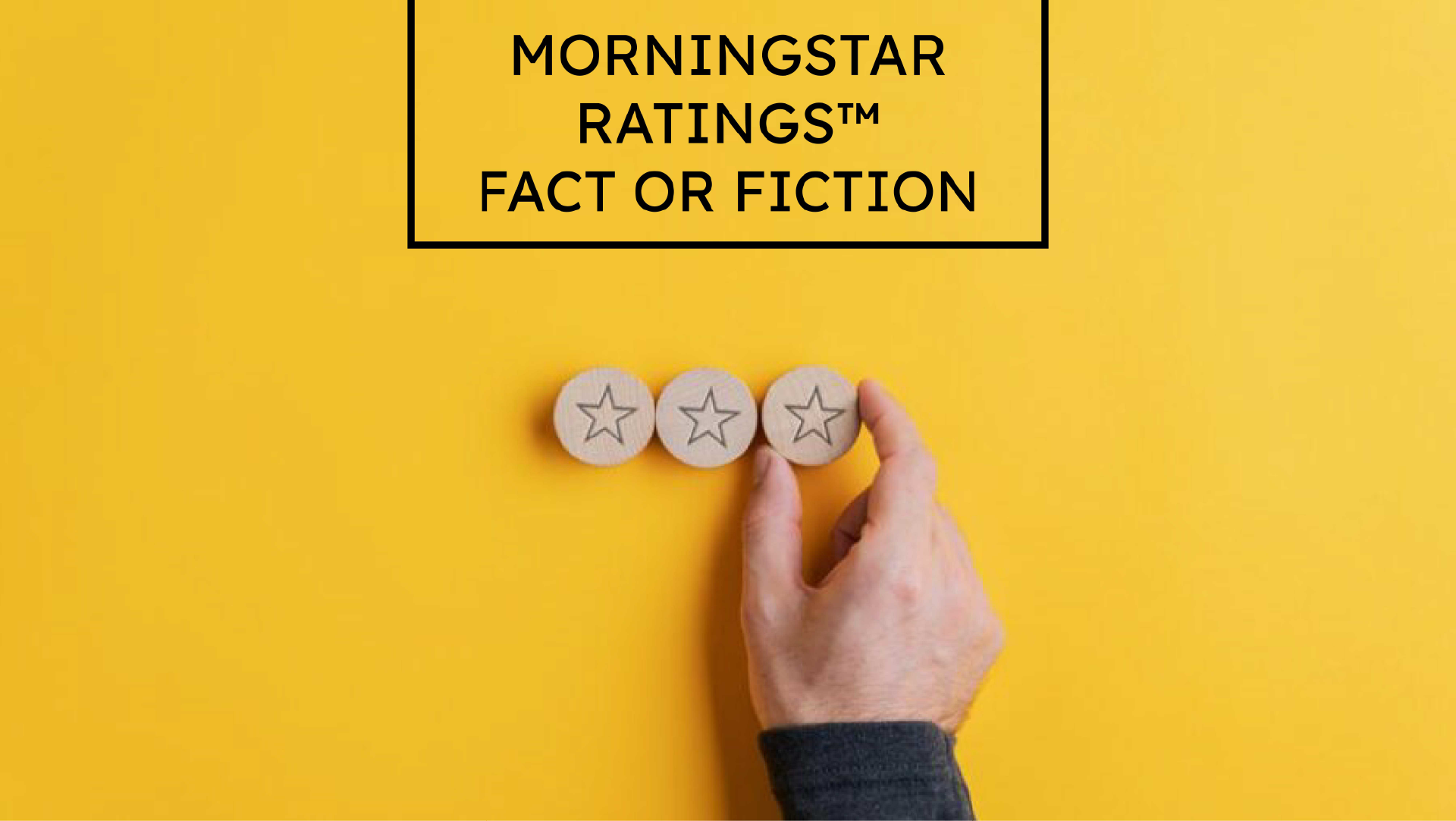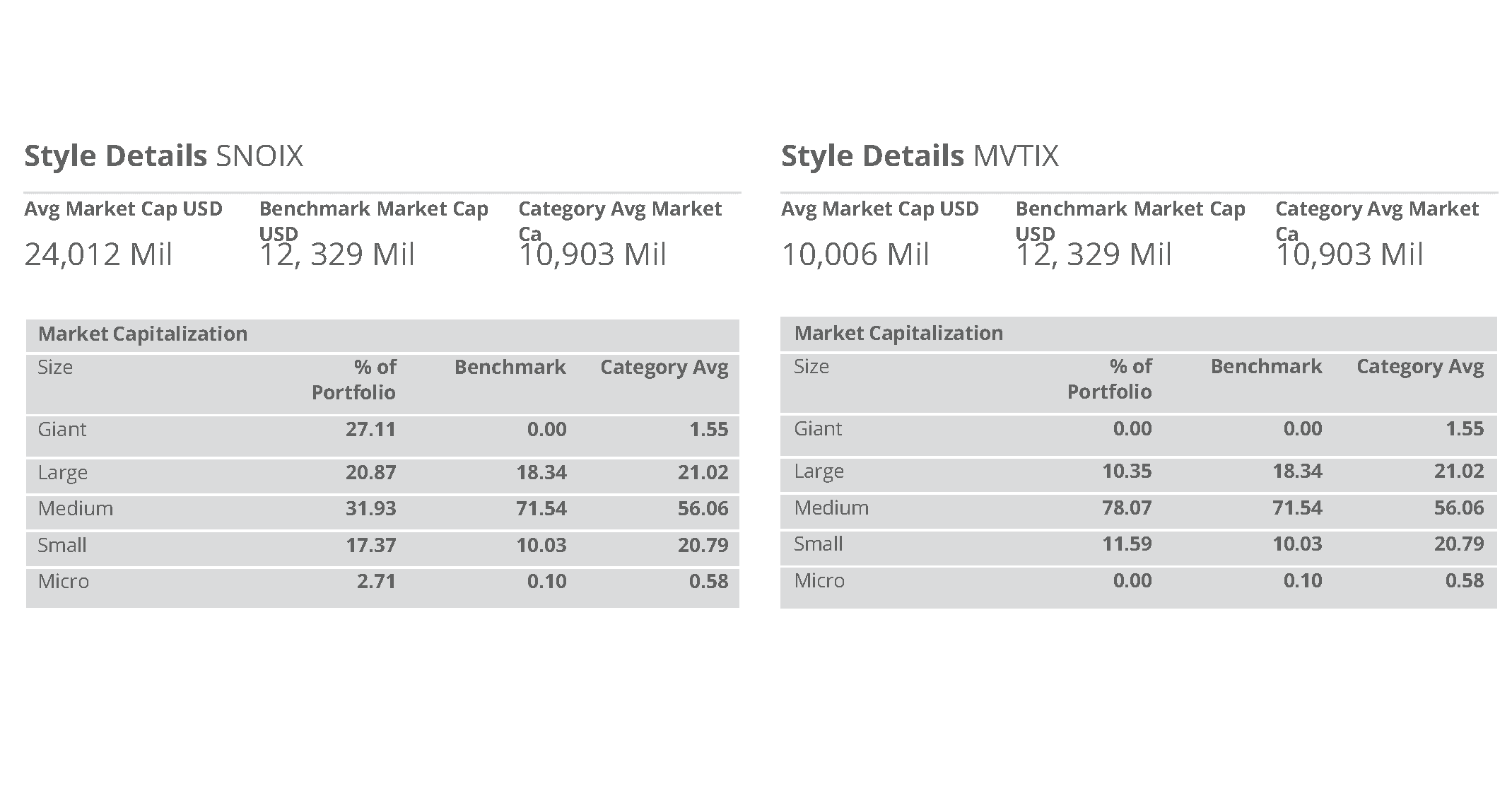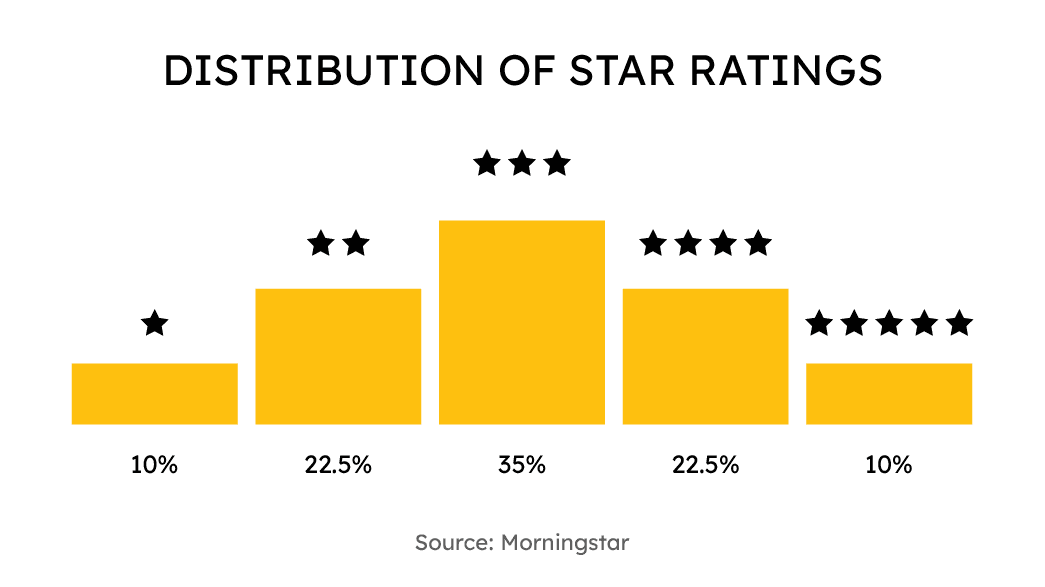
Investing is complicated.
That’s the prevailing sentiment I hear from investors, whether they are new to the stock market or they’re coming to our firm after a few decades of retirement planning on their own or with another advisor.
But does investing have to be complicated? I would argue that with the right processes and framework in place, it can be much simpler than you think.
Unfortunately, the majority of approaches that have tried to simplify mutual funds (one of the most popular investment choices) for the average investor have been…lacking.
Morningstar is one of the companies that has tried to simplify the mutual fund selection process for the masses. Over the last thirty years, Morningstar has leapfrogged the competition in popularity and simplicity with its star rating system.
If you’ve ever done mutual fund research on your own or have any kind of experience in DIY investing, it’s likely that the Morningstar star rating is one of the methods you’ve used to identify how well a fund fits your portfolio.
Unfortunately, Morningstar has made the system so elementary that it is of no real use to long-term investors.
The Wall Street Journal published an article entitled “The Morningstar Mirage,” which found that—unsurprisingly—funds with the highest star ratings tended to attract the most investor assets. The more interesting revelation was that of the funds rated five stars (the highest possible rating from Morningstar), only 12% maintained their rating over the next five years, and 10% received a one-star rating after five years.
Morningstar itself has said that their star-ranking system should not be used as an indicator of future performance.
So why can’t investors let the stars go?
- Let’s examine how the rating system got its start.
- Identify its current shortcomings.
- Show you what we believe is a better way forward for your investment portfolio.
Evolution of the Morningstar Rating System
Morningstar’s star rating system made its first appearance in 1985.
Its original purpose was to provide a simplified method for investors to evaluate funds’ past performance on a risk and cost adjusted basis.
The system used star ratings, and why wouldn’t it? People love the simplicity of a star ranking system. We use it when searching for the best hotels or restaurants, and for years we chose which movie to see based on how many stars film critic Roger Ebert gave it.
Star rankings are a cultural touchstone; we all understand that they’re meant to indicate quality.
For Morningstar, star ratings presented an easy way to rank funds within six broad asset categories.
As education around diversification became more widespread, investors gravitated towards holding multiple funds that achieved different results within a portfolio. As a result, Morningstar developed an enhanced version of the star ratings with the release of its Category Rating™ system in 1996.
This new rating system evaluated funds within a more focused and relevant group of competitors. When used in conjunction with the broader star ratings, the category rating system gave a more complete picture of a fund’s past performance relative to its peer group.
In 2002, Morningstar combined its two rating systems.
The applicable Morningstar Category (used in the Category Rating™ system) became the basis for the fund’s peer group for its star rating, instead of the six broad asset class categories previously considered. A category is a group of funds with similar investment strategies.
While it combined its rating systems, Morningstar also introduced a new measurement for risk-adjusted returns.
Before 2002, the rating system defined risk as underperformance relative to the 90-day Treasury bill. This methodology inaccurately benefited funds that were certainly not without risk but had experienced a recent streak of positive absolute returns, such as tech stocks in the late 1990s (and we all know how those turned out a few years later).
The updated rating system became known as the Morningstar Rating™ and introduced several changes to risk measurement still in use today:
- Bases risk scores on perceived investor preferences
- Rewards consistent long-term performance
- Penalizes downside volatility
- Accounts for the effects of sales charges and redemption fees
- Rates funds over a three, five, and ten year time frames
- Weighs each of the above ratings against the track record of the fund and the consistency of its investment style to determine the overall star rating. If a fund changes category, its risk-adjusted return rating prior to the category change is given less weight.
Nearly all funds with at least a three-year track record are ranked within their category based on their final risk-adjusted return, and star ratings are distributed by percentile ranking.
As of 2016, category groups include all open-end mutual funds and ETFs following a similar investment strategy.
The graph below shows that most funds receive two, three, or four-star ratings while a much smaller percentage receive the highest and lowest ratings.
Despite Morningstar’s disclaimer that the star rating system should not be used on its own to select investments, many DIY investors continue to place a high level of importance on the number of stars given to a mutual fund.
The problem is, while five-star funds may have performed well in the past relative to their peers, there is a reason investment product must disclose “past performance is not indicative of future results”.
As I mentioned above, the Wall Street Journal found that only 12% of five-star funds were still rated five stars five years later.
Investors using the star system as a guide to selecting funds are at risk of chasing performance, which often results in buying high and selling low—the opposite trait of a disciplined investor.
Morningstar Star Rating System Shortcomings
The changes Morningstar made to its rating system between 1985 and 2002 demonstrate some of the flaws that were initially built into the model—and may still exist today.
The original star ratings ranked funds within six broad asset class categories, which unfairly benefited (or punished) funds that invested in specific parts of the market. For example, Morningstar found that within U.S. equities, funds with a value bias consistently received higher ratings than growth-oriented strategies.
And before the rating adjustments in 2002, a fund was basically considered “riskless” at a point in time if it generated positive absolute returns. High ratings skewed towards funds that had experienced recent strong performance, despite their potential downside risks.
We believe these are only a small sample of the shortcomings inherent to backward-looking models in general—and Morningstar’s star rating system, specifically.
Now let’s look at four specific ways in which relying on Morningstar’s ratings system can undermine, rather than assist, efforts to create a balanced portfolio.
Morningstar Category Definitions
In the United States, Morningstar currently breaks the universe of funds into over 120 categories.
Category definitions are as straightforward as “Large Value” or as murky as “Allocation” or “Bear Market.”
Morningstar considers the following criteria when defining fund categories:
- Funds are grouped by the investment styles or market exposures that govern their portfolios.
In general, a single index benchmark should provide a relevant basis for comparison for all funds within a given category. - In general, funds within a category are considered adequate substitutes for one another within the context of a larger portfolio.
- A fund’s category placement is based on three years of portfolio statistics and supplemented by returns-based style analysis, fund documents, and qualitative analysis.
While the large number of categories and apparent work that goes into classifying funds would indicate that funds are categorized with great care, funds are often placed in the wrong peer group due to misclassification or unavailability of an appropriate category.
For example, Morningstar has never had an “All-Cap” or “Multi-Cap” equity category, but many U.S. equity funds are agnostic to, or flexible with, market cap when constructing their portfolios.
As such, these funds are often considered “Mid-Cap,” which tends to be a catch-all for multi-cap strategies.
The chart below shows the variation in portfolio construction between two Morningstar-classified “Mid-Cap Value” funds: Snow Capital Opportunity Fund I (SNOIX) and Transamerica Mid Cap Value Opportunities I (MVTIX).

Source: Morningstar 20171231
These funds are considered substitutes when constructing portfolios, but check out how their allocation to medium-sized companies compares:
- Snow Capital (SNOIX): 32%
- Transamerica (MVTIX): 78%
- Difference: 46%
That is a stark and meaningful difference.
Based on its market cap distribution, SNOIX is clearly not a “Mid-Cap” fund, yet it is ranked against the Morningstar “Mid-Cap Value” peer group and “Mid-Cap Value” index, which directly impacts its star rating.
Morningstar’s “Allocation” categories also contain varying constituents, making them weak peer universes. According to Morningstar, these funds achieve various goals by investing in three major areas: stocks, bonds, and cash.
Within each “Allocation” category, equity percentages vary by 15 to 20%.
The middle-of-the-road “Allocation” category is defined by funds that have 50-70% of their portfolios allocated to stocks.
As we’ve seen, besides the percentage of equity within the portfolio, no consideration is given to differentiation within the equity allocation (e.g., International vs. Domestic Equities or Large Caps vs. Small Caps) or what comprises the remaining portion of the fund.
Additionally, the range of equity exposure within the peer group is large enough that funds with less equity exposure are likely disadvantaged in bull markets, and vice versa in a bear market.
Fund classification is never an exact science, but the variation of funds within certain Morningstar categories lessens the value of the star rating. Remember, that rating is supposed to be based on a fund’s relative attractiveness within its peer group.
And if we can’t trust that a peer group reflects complementary funds, then we likely can’t put much weight into the rest of the classification and ranking process either.
Recategorizing Funds
If a fund’s Morningstar category changes over the course of its lifetime, risk-adjusted performance prior to the recategorization is given a lesser weight in its overall rating.
Morningstar has built this feature into the system so that fund companies cannot game it by changing their investment style periodically.
However, Morningstar controls fund classifications and often reclassifies funds against the will of the fund company.
In some cases, a fund’s holdings profile may change while the overarching investment approach has not. When this happens, Morningstar may still move the fund into a different category.
Fund companies are given the opportunity to petition Morningstar for a category change, but this alone should give investors pause about the value and credibility of Morningstar’s fund classifications.
Varying Definitions of Risk
Morningstar bases risk-adjusted return on expected utility theory, which rewards outperformance and penalizes downside risk. In other words, it assumes that investors are risk-averse, and that they place a higher value on more expected wealth than less expected wealth.
While this may be a useful framework for generalizing retail investors, it does not consider that investors have different portfolio goals and varying definitions of risk. It also does not consider the combination of funds within an investor’s overall portfolio.
A fund considered excessively risky by Morningstar on its own may complement another fund in a given portfolio, improving its risk-adjusted returns.
Because of these additional considerations that a generalized approach cannot possibly cover, Morningstar’s one-size-fits-all approach does not always produce helpful results.
Purely Quantitative and Backward-Looking Approach
Morningstar has stated that its rating system is purely quantitative and backward-looking; therefore, it should only be used as a starting point when selecting investments.
There are several drawbacks inherent to purely quantitative approaches.
For managed investment strategies, quantitative data points do not consider what causes a result. For example, changes in past performance may have been driven by a portfolio manager change, which is not apparent in the fund’s rating.
Furthermore, funds with shorter track records may not be rated at all, eliminating them from consideration.
Morningstar’s rating system does not look past a fund’s track record to consider a manager’s longer institutional track record that could potentially be used as a proxy for evaluation.
And just like funds with the highest star ratings attract the most assets, funds that have performed well recently also get more. But for strategies that have capacity constraints, like small-cap equity funds, asset bloat can impair a manager’s ability to invest opportunistically.
Quantitative research often does not proactively account for this risk, which generally does not show up in the results until it is too late.
Finally, the mantra of the investment management industry is that past performance is not indicative of future results. Basing an investment decision on a backward-looking ratings framework does not guarantee strong performance going forward.
Realistically—and based on how few five-star funds retain their high star rating—the existing framework more likely means that a shift in tide is about to take place.
What Investors Should Do Instead
The Morningstar Rating System was developed as a tool to simplify the process of mutual fund selection. Unfortunately, not everything becomes more valuable with simplification.
Asking a Michelin-star chef to distill a recipe so that even the most inexperienced cook can master it will inevitably lead to a subpar meal.
So why should we expect a rating system based on stars to produce the same results as a disciplined fund selection process? The answer, of course, is that we shouldn’t.
At this point, there are two different approaches you can take to asset management.


Professional money managers do not rely on star ratings to construct portfolios. They use research, objective processes, attention to your individual risk tolerance and situational needs.
Potomac Fund Management was founded in 1987. Since that time, we have specialized in fund research and allocation – continuing to refine and improve our fund selection process.
Selecting the mix of funds appropriate to each client’s objectives and risk tolerance is part art, part science. Potomac utilizes institutional-style analytics to filter through the vast universe of available funds.
If you’d like to have an experienced financial advisor, who will put your best interests first, take a look at your current retirement plan to see how well your current investments support your goals for the future, click here.
Disclosure: This information is prepared for general information only and should not be considered as individual investment advice nor as a solicitation to buy or offer to sell any securities. This material does not constitute any representation as to the suitability or appropriateness of any investment advisory program or security. Please visit our FULL DISCLOSURE page.

